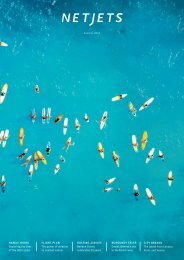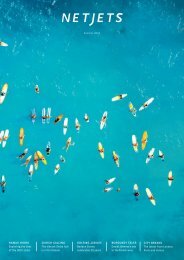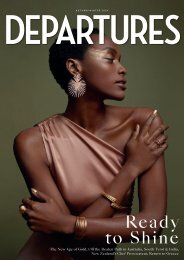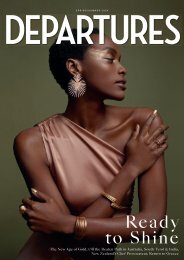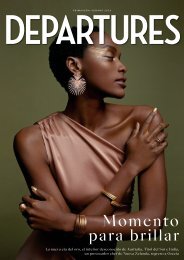NETJETS US VOLUME 12 2020
You also want an ePaper? Increase the reach of your titles
YUMPU automatically turns print PDFs into web optimized ePapers that Google loves.
INSIDE VIEW<br />
A PASSION FOR<br />
COLLECTING<br />
Mera and Don Rubell are art world aristocrats. They began collecting in New York in<br />
1964 and over the past half-century have amassed one of the premier assemblages of<br />
contemporary art in the world. Their approach—to visit artists in studios and develop<br />
long-lasting relationships—was born out of necessity in the early years but has proved<br />
to be prescient: Their collection now includes so many key works by totemic artists that<br />
pieces are constantly rotating out on loan for exhibitions around the world. In 1993,<br />
the Rubells bought an ex-Drug Enforcement Administration warehouse in the thenuntouchable<br />
neighborhood of Wynwood in Miami with the intention of displaying their<br />
pieces. The exhibitions were at their best during Miami Art Week (the Rubells were<br />
instrumental in initiating Art Basel in Miami Beach), and the space soon acquired the<br />
sheen of being one of the touchstones of contemporary art in America. Of course, the<br />
Rubells didn’t stop collecting, and the new, much-expanded space for their collection—<br />
now comprising more than 7,200 works—has been in the works for years. Located<br />
less than a mile from the old one, the new museum is housed in six former industrial<br />
buildings, which have been transformed into 40 galleries by Selldorf Architects, the<br />
New York-based practice that specializes in art spaces (recent commissions include<br />
the Chelsea galleries of both Hauser & Wirth and David Zwirner, as well as the coming<br />
expansion of the Frick). Confidently minimalist, the Rubell Museum sprawls across a<br />
100,000-square-foot campus, and in this notoriously fickle city is one address that will<br />
never go out of style. rubellmuseum.org<br />
P74-75<br />
Don Rubell pauses to look at<br />
Kehinde Wiley’s “Sleep” (2008),<br />
left, and an untitled 1981 work<br />
by Keith Haring, right.<br />
P76-77<br />
The inaugural installation<br />
includes a survey of German<br />
artists. In this room are<br />
three paintings by Neo<br />
Rauch, from left, “Das Neue”<br />
(2003), “Demos” (2004), and<br />
“Vorführung” (2006). A pair of<br />
sculptures from Isa Genzken’s<br />
2013 series, “Schauspieler”,<br />
is also featured.<br />
OPPOSITE<br />
Amoako Boafo’s “Hudson in<br />
a Baby Blue Suit” (2019).<br />
ALL WORKS COURTESY OF RUBELL M<strong>US</strong>EUM. P74-75: NICHOLAS VENEZIA, COURTESY OF SELLDORF ARCHITECTS; P76-77: CHI LAM; OPPOSITE: © RUBELL M<strong>US</strong>EUM; P80-81: © CINDY SHERMAN; © JEFF KOONS STUDIO; © GLENN LIGON; © KERRY JAMES MARSHALL<br />
78 NetJets











